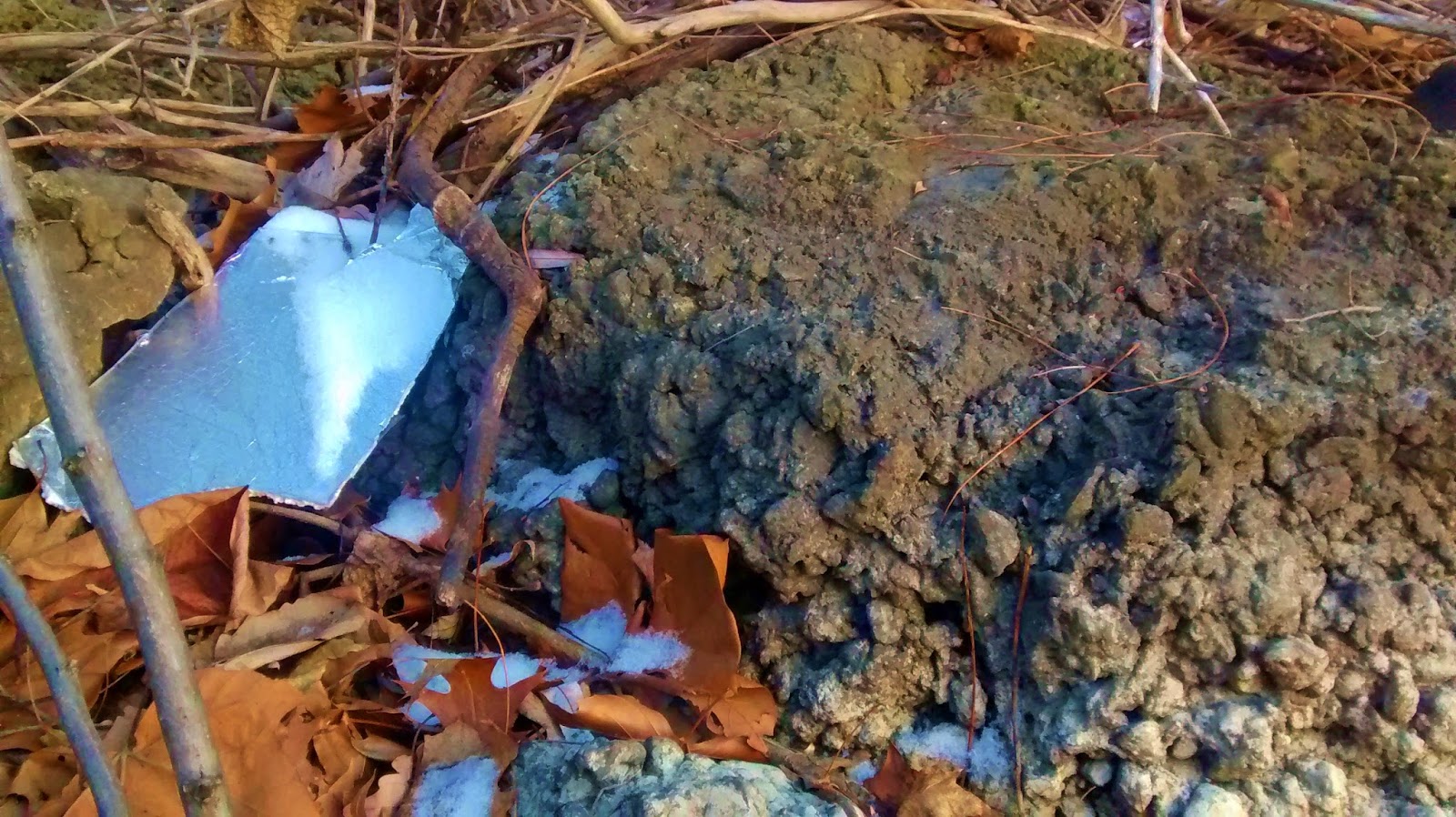
The sky is pastel this afternoon, slipping toward darkness
as the sun steals away behind the west hill. The wind blasts me with cold, cutting
through every bit of clothing I wear, as in previous visits. I hasten to the
Promontory to see what I can see, with the goal of getting out of the cold as
soon as possible. I keep to the loop, then step down onto the small west side
beach where the wind doesn’t penetrate.
I’m hoping for a sunset show. As I wait to see what the sun
will do, I look around the tiny beach. At first glance it’s all rocks and branches,
nature’s debris. Then I see a large, white stick glaring at me and whispering I don’t belong here. A beaver-chewed
stick. Utterly odd to find this. There are a few creeks that flow into the lake
here at the southern end, but as far as I know, none of them are home to
beaver. And to the north there are no swamps or side ponds that would house
beaver. It’s a beautiful stick though. Perfect for building a submerged lodge.
I look more around the pebbly beach. There are other odd
items to be found. Others that don’t belong.
At forty miles, Cayuga Lake is the longest of the Finger
Lakes. Stewart Park sits at the southern tip. Though the water in the lake
moves from south to north—through the Erie Canal to Lake Ontario, then on
through the St. Lawrence River to the Atlantic Ocean—the winds push surface
water, and anything on the surface, to the shore at Stewart Park.

Before the arrival of Europeans, the Native Americans had a
village at the edge of Cayuga Lake called Neodakheat. By the 1700’s, Ithaca was
under the dominion of white settlers. Since then, the land now called Stewart
Park saw use as athletic facilities, an amusement park, a film studio, a zoo,
and Ithaca’s first Vaudeville theatre. A lot of uses, a lot of humans.
So, in addition to whatever is tossed into the water from all
of those forty miles north, and the extensive use of this end of the
lake, there are bound to be cast-off relics.
Normally, I would feel compelled to collect all this
garbage. Normally, I would feel disgusted and angry. Normally, that anger would
switch to depression, as I thought of the lack of human respect for nature. But
today is different. Today I have questions. Today, a discussion in my Nature
Writing course has me thinking constantly about what nature is. And how exactly
humans fit in to it.
A beaver leaving scraps of its housing is ‘natural.’ But a
Smirnoff bottle is not. Why? When Native people lived here 400 years ago, did
they not cast off their waste? Yet when we find shards of ancestral peoples’ pottery,
don’t we clamber to preserve them, often in situ, often as evidence of the previous
natural world? If I dug down under the grass and tennis courts in the middle of
the park, would I find traces of the carousel, the movie making, the zoo
animals that once paced in their cages on this land? Would they be natural
items, there, deep in the dirt? Or would they still be foreigners?
There is no doubt that these human remnants are indeed
trash. My gut tells me they don’t belong. But right now, I look closely at the various
artifacts, figuring out how to take a photo that captures light and creates composition
that might be pleasing to the eye. I imagine I can spin trash into art.
I see these remnants as bits and pieces of discarded life. Someone
drank from that bottle of Smirnoff. Was he drowning his sorrows in a stolen
moment at the far side of the park when he put bottle to lips? Was she leaning
on the rail of the dinner boat when a shift in waves under the hull caused her to
lose her grip on the bottle, dropping it overboard? Was he with his friends, a
few stolen bottles from the parent’s liquor cabinet to try for the first time? I
have to wonder if the stories behind the remnants make them belong. For we are behind the stories, and we all
are trying desperately to belong.
If the human alteration of earthly materials renders an item
unnatural, can a second human alteration—stories, photographs, art—revert it
back? Or is it a natural alteration—burial underground, wind erosion, time—that
which is needed for a remnant to become a part of nature again?
Back in my car with the heat running I jot down my thoughts
about the Promontory today. The sun is gone behind the hill. Only black
silhouettes of trees—and many questions—remain. When I look up at a willow
outlined in light, I see a contrail. A stab of white cut into the darkening evening,
slashed across the tree. An intersection of sorts.
Slowly, the plane traverses the sky leaving its sharp mark behind
it. Equally slowly, the wind pushes at it, breaking the water droplets into a thousand
pieces, dissipating it into blue.










Comments
What a beautiful sentiment. And I love the inspiration you took from the "unnatural" or the trash you found in the natural world. What gorgeous pictures too!
I love your speculation on the origins of the trash. I usually look at it and say, "What a bleeping pig." You've given me cause to wonder about the "pig" who dropped it, and to think about a time when perhaps a napkin or receipt blew out of my own car or pocket.
There is a difference between the beaver's leftovers and ours, but you've blurred the lines a bit. Beautiful post!
Wow. Definitely something to think about. You raise such intriguing questions. Is the word "trash" as vague and complex as the word "nature"?
Your pictures are stunning! What a cool history this place has!